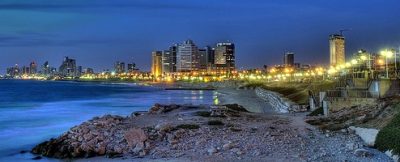International Space Station view of Dubai Light Pollution on February 22, 2012. Can we change the world by switching off for an hour?
People from all over the world are encouraged to turn off their lights for Earth Hour, which takes place on Saturday March, 31 2012 at 8:30 pm local time (check the Earth Hour website for details of your home country). The first Earth Hour was organized in Sydney, Australia in 2007 by the World Wildlife Fund (WWF). By 2011, millions of people across 137 countries participated in this reminder of our ability to change the world for the better.
The Stars are Still There
A few weeks ago I spent a night in a small town on the edge of the Atlantic Ocean and was relieved to see that the same wonderful stars I grew up with are still there, even though all but a handful are invisible for much of the world’s population. If weather permits, Earth Hour gives city dwellers the opportunity to sample the lost beauty of the night sky. Celebrate Earth Hour the moment the sun sets for a truly stellar performance. This sky map shows the Western sky from Beirut, Lebanon during the beginning of Earth Hour at 17:30 UTC.
 Jupiter, Venus and the moon in the West from Beirut, Lebanon during Earth Hour
Jupiter, Venus and the moon in the West from Beirut, Lebanon during Earth Hour
See Four Bright Planets in An Hour
Jupiter, king of the planets, is the first bright “star” above where the sun set. Even a pair of binoculars or a carefully held toy telescope will reveal a string of bright pearls off to the side. When Galileo saw these, he thanked God for allowing him to be the one who discovered what are now known as Jupiter’s Galilean moons.
Next in the lineup is Venus, the Greek and Roman goddess of love. She outshines every star in the night sky. She might even be visible from Abu Dhabi, but find a darker place to really appreciate the beauty of the only planet bright enough to cast a shadow on earth. She is a hottie, her thick corrosive atmosphere gives us a frightening example of the greenhouse effect taken to an extreme. Her surface temperature of 500C would melt lead. The days are very long on Venus, equal to 243 Earth days and slightly longer than its year. It also rotates backwards so that the sun rises in the west and sets in the east.
Look slightly above Venus and you’ll see a small cluster of pretty stars, the Pleiades, also known as the seven sisters of Andromeda. In binoculars this conjunction between the Pleiades and Venus will be wonderful.
Continue along the line from Jupiter through Venus and you’ll see the gibbous moon. Further along this line you’ll see Mars high in the East. It isn’t nearly as bright as Venus, but it shines steady and reddish amongst the stars of Leo. Wait until the end of Earth hour and if your Eastern horizon is clear, you’ll see golden Saturn rising in the east.
It is no coincidence that all of these planets and our moon lie along a line which passes from west to east. This line (red in the image) is called the ecliptic. It is the plane the planets orbit within. During the spring equinox, the earths equator tilts through the plane of the ecliptic, so for those near the equator, the planets lie along a path which reaches almost directly overhead from west to east.
Mideast Light Pollution From Above
On February 22nd, astronauts aboard the international space station used an ordinary Nikon camera with a 400mm lens to take a photo of the light pollution of Dubai. The lights around Burj Khalifa far outshine an already overly-bright city. Tomorrow night ISS astronauts intend to take more photos from space and tweet their observations. What will they see? Each and every one of us can make a difference to the health and beauty of our home planet.
Abu Dhabi light pollution photo, courtesy of Image Science and Analysis Laboratory, NASA-Johnson Space Center. “The Gateway to Astronaut Photography of Earth.”
Image credit: Night sky map of Beirut, via YourSky





MJJ Thank you for the correction, Yes, the satellite photo and Kaleej Times photos are of Dubai. I’ve updated the caption.
Sorry but the aerial shot is of Dubai not Abu Dhabi.
Khaleej Times has some nice before and after photos of Abu Dhabi. Burj Khalifa’s lights were turned off! http://www.khaleejtimes.com/DisplayArticle09.asp?xfile=data/theuae/2012/March/theuae_March954.xml§ion=theuae
JTR, that is a possibility. But light pollution is the easiest pollution to eliminate. Earth Hour’s website is highlighting some success in Libya ( http://earthhour.org/blog/hope-springs-eternal-libya ) and many other parts of the world.
No longer able to see the stars beyond their haze of air pollution, most humans have forgotten where they are in the Cosmos and become all the more self-centered, money-hungry and ecocidal.